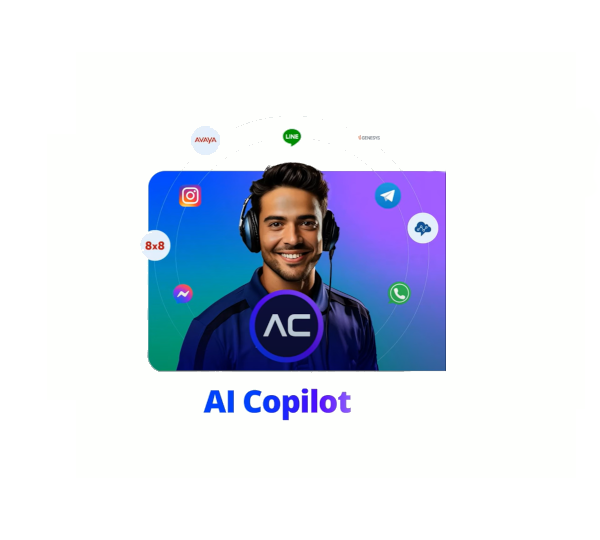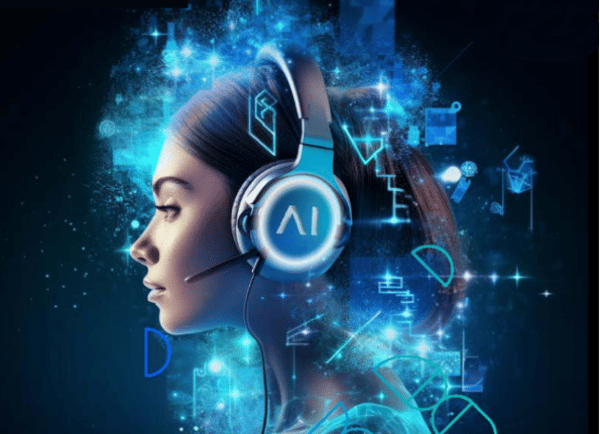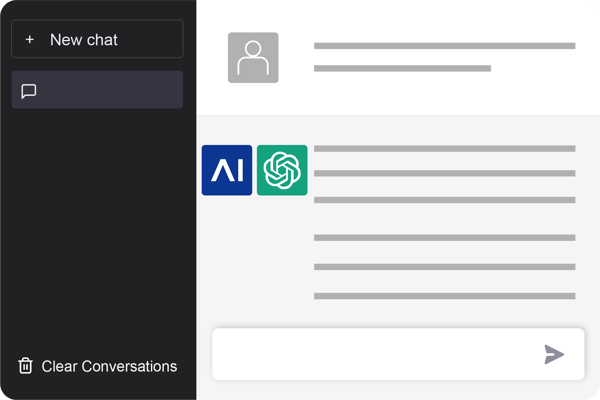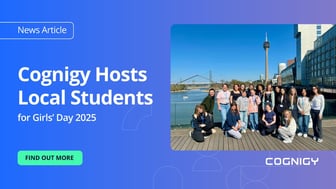Learn about Generative AI and how combining it with Conversational AI can lead to advanced capabilities that optimize your business operations.
The concept of generative artificial intelligence (AI) has taken the world by storm since the recent boom of ChatGPT and DALL-E. Generative AI models have allowed businesses to rethink the way they handle their processes to start planning for the future.
Generative AI systems can automate long-drawn-out tasks for heightened efficiency, as well as provide new, creative ideas that businesses can use to express their brand. However, this revolutionary technology alone isn’t the silver bullet to a successful organization.
Generative AI has advanced capabilities that can thoroughly optimize business operations, but it’s not possible to rely heavily on it for every aspect of your organization. So what is Generative AI? And what does it really mean for your business?
What Generative AI Is — And What It Isn’t
It’s easy to think that Generative AI is a brand-new technology, in light of how popular its recent advancements have been. However, it’s been in development for several decades and traces back as early as the 1960s when Joseph Weizenbaum developed the first chatbot called ELIZA. Since then, it’s seen substantial growth — truly taking flight at the end of 2022.
But with these developments have come common misconceptions surrounding what Generative AI actually is and what it means for organizations around the world. Let’s break this down.
What it is:
Generative AI is a type of artificial intelligence — usually involving the AI subcategory known as machine learning (ML) — that performs original content creation based on its training data. For example, ChatGPT uses deep learning and natural language processing (NLP) algorithms to analyze queries typed in natural, conversational form by parsing through vast stores of text data (ranging from public records to online articles) and producing concise but clear summary answers.
Generative AI technology is an effective tool for generating fresh, creative ideas that businesses can mine for inspiration to contribute to their marketing efforts and branding initiatives. Generative AI can also work alongside other forms of AI, such as Conversational AI, to create reliable business solutions that enhance the customer experience.
What it isn’t:
Autonomous
A common misconception regarding Generative AI is that it will eventually replace human skills and creativity, eliminating the need for human workforces. In fact, according to Goldman Sachs Global Economics Research, 63% of jobs are likely to be complemented by AI — not replaced. While Generative AI may produce impressive content, it’s limited to the data it’s trained on. It still requires human supervision, intervention, and a large number of costly resources.
Instead, Generative AI can function as a valuable tool for businesses that seek to enhance their marketing and sales strategies for an improved customer journey.
A Business Content Generator
Another myth related to Generative AI is that it’s a cost-efficient content generator. With the ability to create written pieces, pictures, and audio in a matter of seconds, the possibilities seem endless. However, there are concerns circulating regarding generative models' potential for copyright infringement, per Harvard Business Review. Because AI relies on its training data, the content generated might be heavily influenced by copyrighted material — making it a potential compliance issue.
It’s important to remember that Generative AI won’t replace job roles and do everything for us. Instead, it should be perceived as a tool that supports business goals by contributing to customer satisfaction and engagement.
What Can Generative AI Do?
Generative AI primarily creates new content based on a user’s prompt by using existing data. This type of AI is able to:
- Generate text.
- Form realistic images.
- Design products and strategies.
- Make music.
- Create games.
- Format videos.
- Write computer code
Underlying technologies, such as a large language model and NLP models, have enabled Generative AI to reach advanced levels beyond what could be conceived 5 years ago. Mastery of human language is the core foundation of Generative AI. With such a large dataset, it also has well-structured knowledge of the outside world, which allows it to generate intelligent responses without further training required.
Through Generative AI’s prediction model, it’s also capable of a certain extent of logical reasoning — drawing conclusions that are much more developed than those of standard chatbots. When implemented into business practices, Generative AI can converse with querying consumers and provide excellent services for an optimized customer experience.
What problems can generative AI solve?
Creative Stagnation
With fast and realistic image generation, marketers can give prompts to a Generative AI system related to their brand. This helps marketers and digital content creators to get experimental with their creative material and explore new ways to engage their audience.
Contact Center Issues
When customers reach out for support and are met with long waiting periods, it can have a direct positive impact on call abandonment rates and CSAT (customer satisfaction) performance. When Generative AI combines with Conversational AI, businesses unlock the power of automated intelligent conversations that customers can interact with instantly. These technologies can generate text and audio responses, which makes them suitable chatbots and Conversational IVR for your ai powered contact center.
Weak Cybersecurity
Generative AI can detect and prevent cyber threats by identifying anomalies in business systems. Additionally, it can learn from employee behavior, which helps mitigate common risks such as human error and malpractice.
Comparing Generative AI and Conversational AI
Generative AI refers to AI models that use input data and ML algorithms to generate new content. By contrast, Conversational AI is a core contact center automation technology that can form focused, intelligent conversations.
There are strengths and weaknesses in both forms of AI. Here are some of the positives and negatives of each AI when considered in a business context.
Generative AI Strengths and Weaknesses
- Human-like Responses: Generative AI’s natural language processing is equipped to answer questions in a way that resembles human interaction. This is an excellent advantage for companies that aim to automate their customer service processes. According to Cyara’s Forrester Chatbot survey, 75% of customers agree that standard chatbots aren’t able to handle complex questions. Generative AI has the power to change that.
- Low Effort: Generative AI doesn’t require high maintenance. It mostly processes and generates data without much intervention. That’s not to say it’s fully autonomous, but because it requires little effort to run, this improves time and resource efficiency.
- AI Hallucinations: Because Generative AI isn’t trained for a specific purpose, it can generate generic outcomes and go off track when performing assigned tasks. This leads to what’s known as an “AI hallucination”, where responses are worded to fit a specific question, but the substance of the answer isn’t accurate.
- No System Integration or Channels: It’s not possible to integrate Generative AI into all business systems, and with no connection to your channels, it won’t be able to assist customers in relation to your support, products, and services.
Conversational AI Strengths and Weaknesses
- Task-Focused: Due to Conversational AI’s smaller data set, it’s much better at maintaining focus on the task at hand. From a customer service perspective, this helps the answer queries directly and achieve customers’ goals.
- Allows System and Channel Integration: Unlike Generative AI, Conversational AI can integrate into your business systems and channels. This means it has access to company-specific information that allows customers to get comprehensive answers to their queries.
- Rigid Conversational Flow: Because Conversational AI can only interact with pre-defined responses, it can’t precisely replicate human conversations, like Generative AI. If customers have specific queries that aren’t covered in the dataset, Conversational AI won’t be able to form a helpful solution.
- High Effort: Conversational AI requires regular optimization to both improve its Natural Language Understanding (NLU) as well as adapt to how customers interact with it versus how conversation designers anticipated interactions to flow.
Conversational AI and Generative AI work together perfectly. Their strengths cancel each other’s weaknesses to form a powerful AI tool that businesses can integrate into their contact center for enhanced customer satisfaction.
How Conversational AI and Generative AI Works
Generative AI, which is powered by Azure and Open AI, can combine with Conversational AI pre-existing or new data to form an advanced technology that businesses can take advantage of. The Conversational AI technology keeps the conversation on track, provides guard rails for Generative AI, and offers company-specific responses, such as opening hours, office locations, and protocols. Conversely, Generative AI algorithms, like the GPT-3.5 model that drives the free version of ChatGPT, bring creativity, fluidity, and flexibility to the interaction.
This technology greatly supports various areas of customer service, whether that means taking over conversations and interacting with the customer directly, or supporting a wide range of human agents by generating contextualized replies and summaries in customer assistance scenarios. With Generative and Conversational AI, you can form seamless booking engines, CRM, ticketing systems, and more.
At Cognigy, we embrace a composable architecture approach where our platform lives within an existing ecosystem. Our flexibility helps our customers preserve investment by allowing them to choose which individual technologies work best for their specific purpose.
Here’s what Cognigy’s solution looks like in practice.
In this phone interaction, the customer called from a phone that’s connected to the Cognigy AI platform. This is just one of our 25 pre-integrated channels. Our platforms connect with more than 100 back-end systems that allow for efficient data processing to serve the requests of our front-end users.
The Overwhelming Benefits of Generative AI With Conversational AI
Conversational automation is a great solution for companies who want to expand their customer service capabilities. Here are some of the benefits you can expect from these AI services.
- Enhanced Customer Experience
Combining Generative and Conversational AI can leverage your customer service. It creates an intuitive customer experience that’s completely personalized to the individual and context. Because these AI systems are designed to provide polite, friendly responses, you can feel assured that your customers are receiving quality assistance. - Cost-Effective Solution
AI technology allows you to automate areas of your contact center, which significantly reduces costs by shortening call center working hours. Also, you can save money by decreasing training budgets, as AI can assist operators with contextual suggested responses. Additionally, it allows your business to focus on more in-depth training for particularly complex queries. - Widely Scalable
Generative and Conversational AI can handle large volumes of customer interactions simultaneously making it easy to scale for enterprise needs. This eliminates customer service waiting times and swiftly delivers solutions to customers — leaving them pleased with your brand’s assistance. -
Highly Efficient
Customers with diverse schedules value 24/7 support, so they can get help whenever they need it. Using AI solutions means you won’t have to restrict your customer service hours to local working hours. AI will be readily available to assist anyone that reaches out to your contact center without having to outsource operations overseas
Examples of Industries That Benefit From Conversational AI and Generative AI
Finance: Financial firms can utilize the Conversational and Generative AI tool to enhance their contact center by providing instant customer service. In a matter of seconds, AI technology can verify users with specified authentication methods, administer money transfers, and provide helpful financial advice. This satisfies customers by minimizing time spent on the task while receiving excellent assistance.
Healthcare: Combining Conversational and Generative AI can improve healthcare services and relieve pressure on staff. It can optimize communication by monitoring patients’ health, offering tailored guidance to specific patients, and automating administrative tasks, such as appointment bookings and prescription reminders.
Travel and Hospitality: For customers that require immediate changes to their booking, Generative AI and Conversational AI can step in for instant, efficient communication. Take a look at our demo that demonstrates how travel companies use Conigy.AI and Large Language Models (GPT-3).
That’s just to name a few. However, any company that aims to optimize its contact center for an augmented customer experience can greatly benefit from Generative and Conversational AI.
Power Up Your Contact Center With Cognigy
Cognigy, the market leader in Conversational AI, powers up enterprise contact centers to exceed customer expectations, improve agent satisfaction, and rapidly respond to market changes. Our low code Conversational AI platform, enhanced with Generative AI, offers next-gen customer service with solutions like Conversational IVR, Smart Self-Service, and Agent + Assist.
Cognigy gives enterprises all they need to deliver personalized, always-on experiences at scale on voice and chat, on any channel. To find out more, get in touch or book a demo with Cognigy today!

.png?width=60&height=60&name=AI%20Copilot%20logo%20(mega%20menu).png)




.png?width=600&height=600&name=Knowledge%20AI%20Feature%20image%20(2).png)













